Related Research Articles
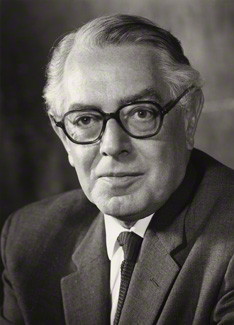
Edward Arthur Alexander Shackleton, Baron Shackleton, was a British geographer, Royal Air Force officer and Labour Party politician.

The French Academy of Sciences is a learned society, founded in 1666 by Louis XIV at the suggestion of Jean-Baptiste Colbert, to encourage and protect the spirit of French scientific research. It was at the forefront of scientific developments in Europe in the 17th and 18th centuries, and is one of the earliest Academies of Sciences.
The Council for British Archaeology (CBA) is an educational charity established in 1944 in the UK. It works to involve people in archaeology and to promote the appreciation and care of the historic environment for the benefit of present and future generations. It achieves this by promoting research, conservation and education, and by widening access to archaeology through effective communication and participation.

USS Burrfish (SS/SSR-312) was a Balao-class submarine of the United States Navy named for the burrfish, a swellfish of the Atlantic coast. The vessel entered service in 1943 and saw action during World War II and in the postwar era. In 1961 Burrfish was loaned to the Royal Canadian Navy where she served as HMCS Grilse and was used primarily as a training boat from 1961 until 1969.
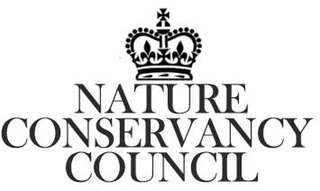
The Nature Conservancy Council (NCC) was a United Kingdom government agency responsible for designating and managing National Nature Reserves and other nature conservation areas in Great Britain between 1973 and 1991.
The Royal Army Educational Corps (RAEC) was a corps of the British Army tasked with educating and instructing personnel in a diverse range of skills. On 6 April 1992 it became the Educational and Training Services Branch (ETS) of the Adjutant General's Corps.
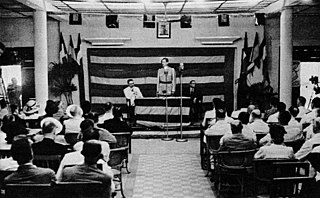
The Brazzaville Conference was a meeting of prominent Free French leaders held in January 1944 in Brazzaville, the capital of French Equatorial Africa, during World War II.
The French Institute for Demographic Studies is a French research institute specializing in demography and population studies in general.
The New Towns Acts were a series of Acts of the Parliament of the United Kingdom to found new settlements or to expand substantially existing ones, to establish Development Corporations to deliver them, and to create a Commission to wind up the Corporations and take over their assets and liabilities. Of these, the more substantive acts were the New Towns Act 1946 and the Town Development Act 1952. "The New Towns Act [1946] was intended to pre-emptively direct urban growth and infrastructural development into new towns, thereby decentralising population and economic opportunity while inhibiting urban sprawl."

Eugene Grebenik, known as "Grebby", was a British civil servant who was a central figure in the development of demography in Britain. He was the first director of the British Civil Service College.

Sir Alexander Frederick Whyte was a British civil servant, Liberal Party politician, writer, and journalist.
National Records of Scotland is a non-ministerial department of the Scottish Government. It is responsible for civil registration, the census in Scotland, demography and statistics, family history, as well as the national archives and historical records.
Audrey Ursula Smith was a British cryobiologist, who discovered the use of glycerol to protect human red blood cells during freezing.
Sir James Gow Mann was an eminent figure in the art world in the mid twentieth century, specialising in the study of armour.
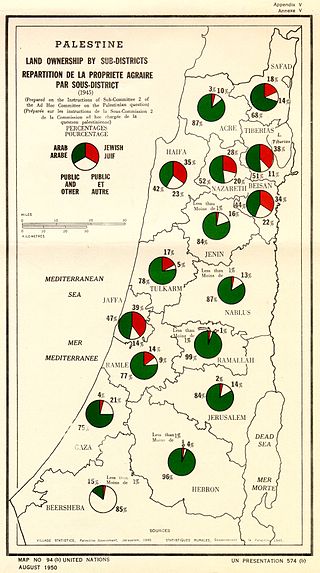
Village Statistics, 1945 was a joint survey work prepared by the Government Office of Statistics and the Department of Lands of the British Mandate Government for the Anglo-American Committee of Inquiry on Palestine which acted in early 1946. The data were calculated as of April 1, 1945, and was later published and also served the UNSCOP committee that operated in 1947.

Atherton War Cemetery is a heritage-listed cemetery at the corner of Kennedy Highway and Rockley Road, Atherton, Tablelands Region, Queensland, Australia. It was built in 1942. It was added to the Queensland Heritage Register on 19 November 2010.

British Naval Forces Germany was a command of the Royal Navy that was active from 1944 to 1961 under three titles.
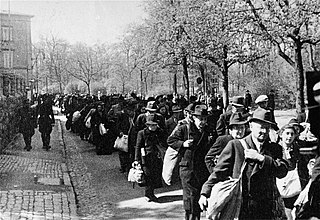
The question of how much Germans knew about the Holocaust while it was ongoing continues to be debated by historians. With regard to Nazi Germany, some historians argue that it was an open secret amongst the population, whilst others highlight a possibility that the German population were genuinely unaware of the Final Solution. Peter Longerich argues that the Holocaust was an "open secret" by early 1943, but some authors place it even earlier. However, after the war, many Germans claimed that they were ignorant of the crimes perpetrated by the Nazi regime, a claim associated with the stereotypical phrase "Davon haben wir nichts gewusst".

The liberation of France in the Second World War was accomplished through diplomacy, politics and the combined military efforts of the Allied Powers, Free French forces in London and Africa, as well as the French Resistance.

USS LST-382 was a LST-1-class tank landing ship in the United States Navy during World War II. She was later sold to France as La Paillotte (LST-382).
References
- 1 2 3 "General Register Office: Royal Commission on Population 1944-1949". The National Archives. Nov 2023.
- 1 2 GREBENIK, E. (1949). "The Report of the Royal Commission on Population". Nature. 164 (4164): 298–300. Bibcode:1949Natur.164..298G. doi: 10.1038/164298a0 . PMID 18137035. S2CID 4060729.
- 1 2 "Report of the Royal Commission on Population". Journal of the Institute of Actuaries (1886-1994). 76 (1): 38–59. 1950. doi:10.1017/S0020268100013238. JSTOR 41138861.